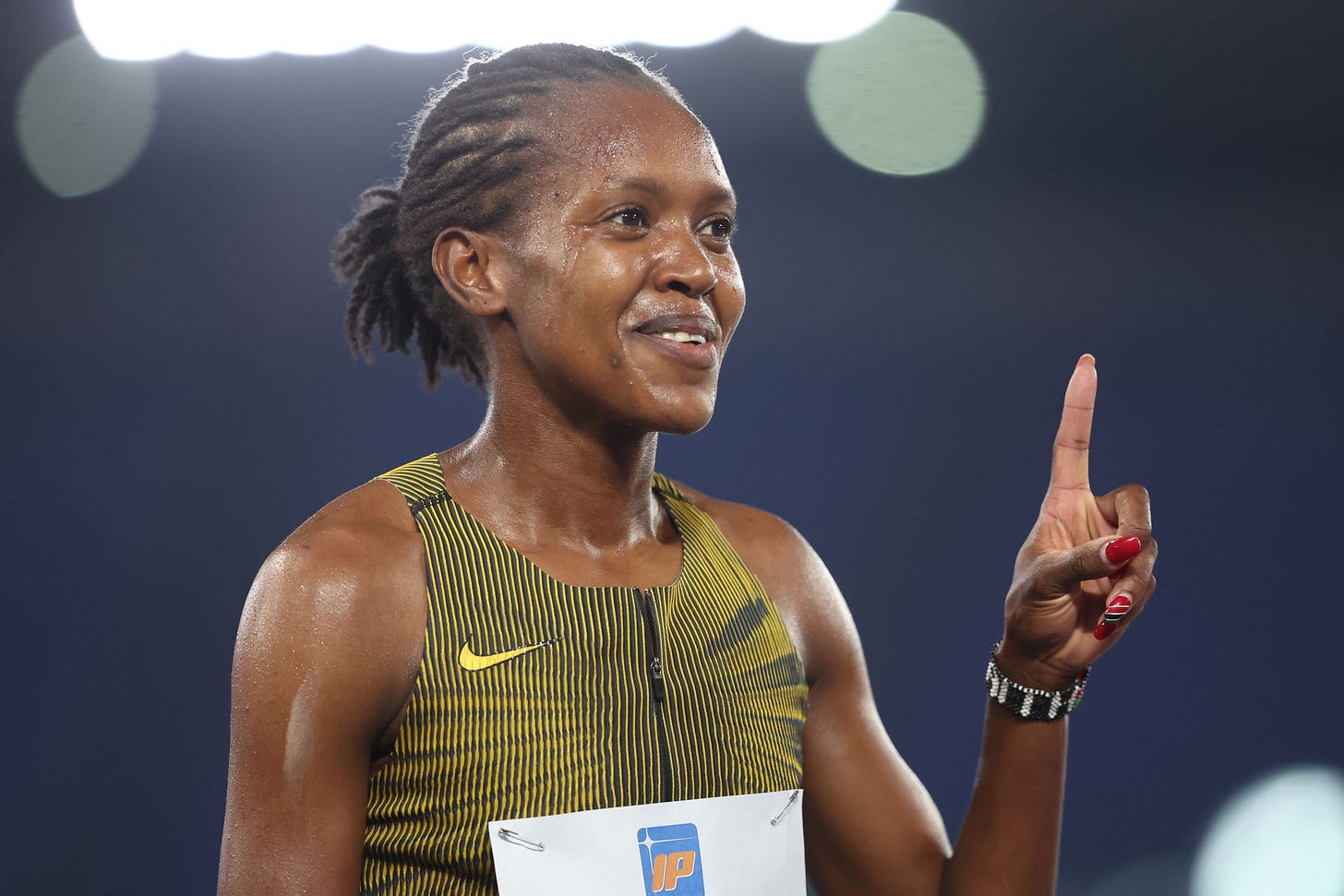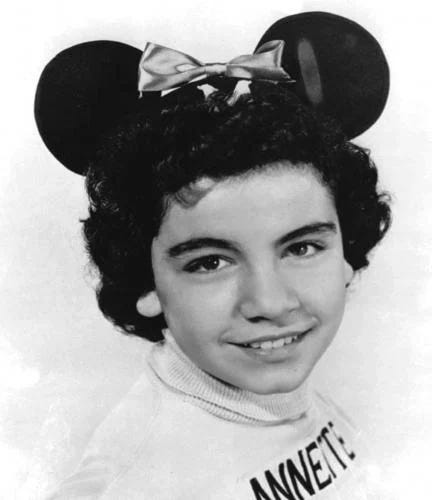Were you built to be a Mouseketeer or a track star?
Names and role models provide scaffolding to our own structures.
Faith Chepngetich Kipyegon took her place at the starting line. She shook her taut forearms and triceps in preparation to complete a sub-four-minute mile run. Onlookers in the Paris stadium waved black, red, and green flags from her home nation of Kenya. At 5 feet 2 inches, weighing less than one hundred pounds, she muscled her arms and stretched them overhead. Sinewy limbs breezed through their warm-ups. She was surrounded by a cohort of runners, designed as human windshields to offer the best shot at this record. They too were lean, and leaning into her success.
Considering heritable characteristics, one could say, Faith and the other tracksters were built that way. Runners from Kenya are outstanding middle- and long-distance runners. Michael Phelps shoulders were built to butterfly. Lebron’s arms meant to cradle a basketball.
Earlier that morning, I lolled about in bed, atypical for me. The evening prior had been physically taxing on a body I had pushed too often in the past. Had I done so again? Pain shot up from beneath the kneecap to the thigh, hip, over to the connection with the femoral artery. I’d had this type of injury before. The problem was declaring what the injury was. Leftover, referred, new. Where did it originate from and why?
Content for a moment in an agony-free state to postpone what lay ahead, I wondered if I was built for this, another push? Pressing forward to sit and complete a body of work, when the body wasn’t working?
In Faith’s attempt, Nike had helped her establish a team of runners, and designed an aerodynamic uniform and a new-age sports bra that would position her to accomplish the goal. If we examined our bodies and minds without judgement, and built up our supports with Nike-level intensity (sans the monetary investment) could we understand what are we built for?
*
If this all sounds like a Barbie song, that’s because it is. Billie Eilish wrote and sang:
I used to float, now I just fall down
I used to know but I'm not sure now
What I was made for
What was I made for?
There are times in all our lives when we ponder this question, writers especially. We consistently seek outside affirmations. It’s a near constant drumbeat in our heads, on the page. We know what we’re built for when we’re in it, when the iron strikes. If we’re not in it, if we’re not writing, if we go cold, we fall apart. Misery wins.
How long is my body built to last, to sit, to ponder? The wrists to write? The shoulders to hunch (despite trying not to)? The feet to dangle off the floor? The hips to bear the brunt of it all? The hands to hold it all?
Is that what I was built for?
*
Until I turned thirty, I had never met another one of me. That is, another Annette. For my older sister, Laura, her name was everywhere, and in different forms: Lori’s, Lauren’s, and author Laura Ingalls Wilder. My brother, Paul, had an apostle to follow. My younger sibs were also not without names to model themselves after. Beth, as in Queen Elizabeth. And Jeanne, she was named after our mother, Jean.
The only Annette who gave me some insight on how an Annette was supposed walk, talk, and be, was Annette Funicello. An Italian American, she became a cultural touchstone to many, and an idol to teens.
Known for her wholesomeness, Funicello’s spate of Skippy peanut butter ads ran in the late 1970s to coincide with my time of skulking through the hallways to the tune of classmates mimicking, “It’s hard to beat Skippy,” or echoing Mouseketeer cheers and songs. Imagine me, dark hair, permed and curled, knowing this was my fate. Or that I could hawk peanut butter the rest of my life. And that wasn’t possible because my mother NEVER bought Skippy. We were a Peter Pan family. Mom never veered from that red—labeled jar with yellow top.
Given the “other” Annette was discovered in 1955, a full eleven years before my birth, perhaps her appearance in the Beach Party movies of 1963 or 64 stayed with my mother long enough for her to consider who I might mold myself after. How I might lift myself up in the world. Annette too was a daughter of first generation Italian American parents. In a 20/20 interview, she mentioned how she felt like the “ethnic one,” compared to her blonde Mouseketeer counterparts. Due to her dark hair, bushy eyebrows, and olive skin, she not only became a role model for many who didn’t see themselves represented on tv. She represented her heritage and family and demonstrated the best of who she was, easing the plights of the next generation of Italian Americans and other hyphenated Americans, those who chose to make meaning from the past. Like my mother. Like me.
*
What happened to Faith (the runner)?
The young girl in me, the one not named after Annette Funicello, watched as the starting gun in Paris went off. With a strong stride, Faith hugged the inside track where green lights paced her for the first two laps. I remembered young me, struggling when slotted to run the 200m or the 400m events, desiring only to run the 100m hurdles, where I had trained to switch lead legs due to my short strides. The junior and high school years I ran hurdles were dominated by the Russians and other Eastern bloc countries at the Olympics. Though now the field is controlled by Sydney McLaughlin-Levrone (400m hurdles), Keni Harrison (100m hurdles), Masai Russell (NCAA hurdler), and more recently Tia Jones, and Lolo Jones. Back then, there weren’t many female American hurdlers to pattern myself after. Annette Funicello as a role model looked better each day. Still I still a flash of my running self in Faith.
Faith rounded into the fourth lap, milliseconds, then half-seconds, shy of the track’s green lights. Tears streamed down my face. That feeling of coming up short. Of the closeness to a kind of flying. She couldn’t make up that timing, but I cheered nonetheless for the finish of a lifetime. She crossed the line six seconds over her goal. But set a personal best world record.
In a later interview, a disappointed Faith said, “We are not limited…. we can try everything in our lives…prove to the world we are strong….” By “we,” she inferred females, women, others who felt limited. She reminded viewers someone else might come along and set that record. She will be there for it.
And Annette Funicello? Her life ended tragically. After filming a reunion movie with Frankie Avalon in 1987, she began feeling the effects of what was later diagnosed as multiple sclerosis. She died a year after the revelation of her diagnosis.
What we’re all made for is to recognize the moment or moments when they are ours. Despite setbacks that plague the outer self, if we construct an inner self that’s fluid, bolstered by love and determination, we’ll stand strong. We are not limited. We can be any Annette we choose to be.
What exactly is it you’re built for?
What I am reading, writing, watching, sweating?
After a long hot Fourth of July weekend, hubby and I took in the F1 movie. I know little to nothing about car racing, except how I once pretended to be Mario (Annetti) Andretti, driving my little, two-door, silver stick-shift Toyota Corolla around town. I’ve not watched Drive to Survive, but this movie gave me some insights on the car racing industry, the challenges still of women in the industry, and another reason to love the Italians and the their heritage of car racing.
I’m flying through books and forgetting what I’ve read. Not a good sign. Thankfully, July slows enough for me to settle into a few good reads. I did finish S.A. Cosby’s King of Ashes, a little like the Godfather books, but only further south with crematorium.
If I haven’t mentioned this, Sleep by Honor Jones. “Every parent exists inside of two families simultaneously - the one she was born into, and the one she has made.” And some of us live inside more than two.
Writing life has slowed some as I lie in wait for others to finish their work on Something Italian: From Distant Shores to Family Tables, the Recipes that Held Us Together. That doesn’t mean I’m not busy thinking about ways to put this in the hands of my readers when complete. Ideas include podcasts, storytelling and food events, and subscriber-based special releases.
I’ll leave you with this quote from F1 to inspire your summer days: “Slow is smooth, smooth is fast.”







Loved your piece today. Not a a lot of Damon’s to model after… Damon Runyan? Damon from Damon and Pythias? I dunno. I guess one just figures it out.
Anyway, also can relate to having body breaking down and wondering how hurt am I really.
Finally, was excited to read the bit about Faith Kipyegon because my wife and I got to see her run this past weekend at the Prefontaine Classic where she ran a world record 3:48 1500. And got to see Sydney McLaughlin-Levrone dominate the 400 flat. So inspiring.
Hope you are well.
Damon Bourne